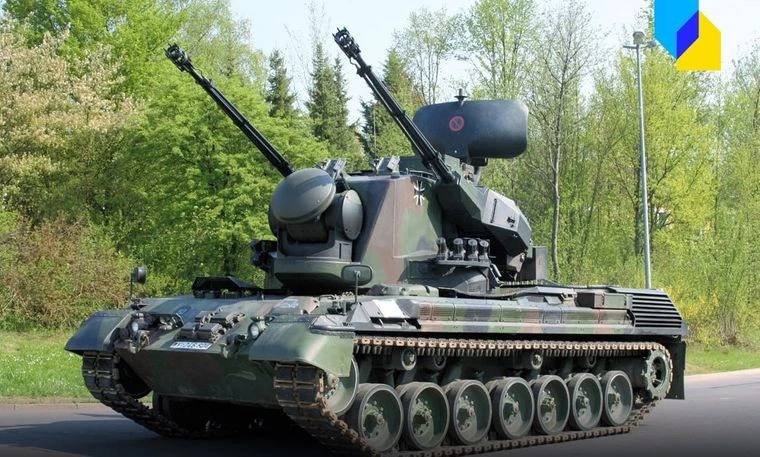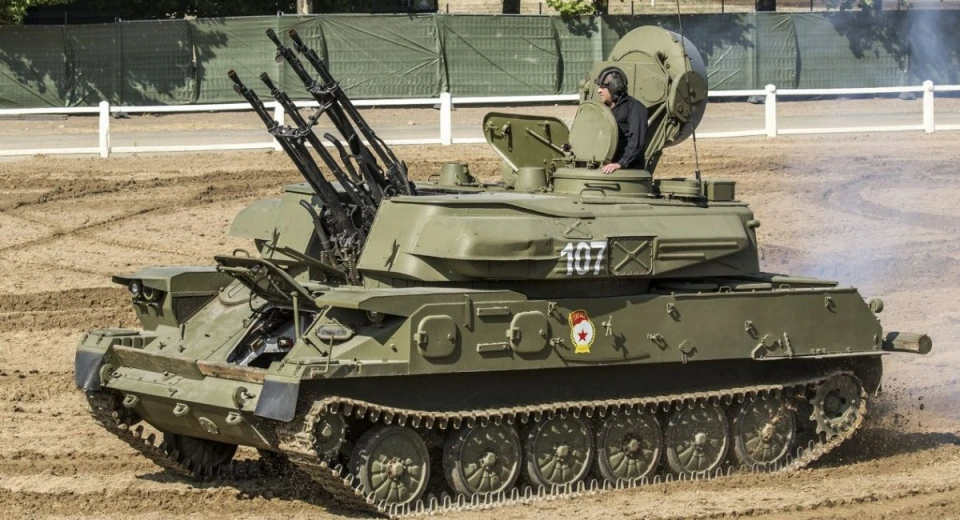
What are Gepard "anti-aircraft tanks" and how they help Ukraine to protect its skies?
The Gepard anti-aircraft gun tank is needed to reinforce the protection of Ukrainian skies: what is known about them and how Gepard integrates into Ukraine's air defense system
Espreso will share the history of production, characteristics and significance of this tank, as well as how many units are already in service with the military and whether Ukraine should expect more.
In this article, you will learn about:
-
Gepard: the history of the self-propelled anti-aircraft gun
-
What is Gepard: tactical and technical characteristics
-
Analogues and advantages of the Gepard anti-aircraft tank over other weapons of the Armed Forces of Ukraine
-
Gepard: the weapon needed to protect Ukrainians and infrastructure
Gepard: the history of the self-propelled anti-aircraft gun
Anti-aircraft artillery systems are designed to defend against attacks by air targets such as military aircraft, helicopters, missiles and drones. Their main task is to protect important targets, which include military bases, cities, industrial plants, airports, ships and other facilities.
They can also be used to provide cover for the military during combat operations on the ground, ensuring the safety and protection of units from aerial threats.
The Flakpanzer Gepard, or also known as Cheetah, is a German-made self-propelled anti-aircraft artillery system. Its main task is to destroy air targets at distances from 100 m to 4000 m and at altitudes up to 3,500 m flying at subsonic speed, as well as to hit ground targets at a range of up to 4,500 meters, and rarely to cover infantry.
Design work began in 1966 to replace the US M42 Duster in service with the Bundeswehr. The development of this combat vehicle was based on the chassis of the Leopard 1 tank and a 360-degree rotating turret that housed tracking and fire control systems - radars - as well as the main armament - guns.
In 1976, the Gepard tanks entered service in Germany. Later, tanks were exported to other countries, such as Belgium and the Netherlands.
In the 1990s, the self-propelled anti-aircraft system was modernized, but in the 2000s, European countries began to decommission it and resell some of it abroad. They were replaced by more effective anti-aircraft missile systems.

What are Gepard tanks: tactical and technical characteristics
The first prototypes of the self-propelled air defense system were equipped with two 30-mm or two 35-mm guns. Subsequently, two 35-mm guns from the Swiss manufacturer Oerlikon KDA were selected and put into mass production.
The Gepard has two main radars. The first is a search radar, installed in the rear of the turret, with a range of 12 to 18 km, depending on the modification. Its main task is to detect the enemy, it has a friend-or-foe recognition system, and then it transmits this information to the second radar, the tracking one. This, in turn, relays the data to the fire control system, which is able to calculate the optimal fire plan to strike the enemy.
Importantly, the Ukrainian 1 A2 version has a computer that can receive data from other radar systems, which actually allows it to detect targets outside its own range.
To work on ground targets (radar does not work in such cases), Gepard has periscopes designed to visually identify and observe the object, analyze the combat situation and targeting. This is especially important if the enemy uses electronic warfare systems.
With its impressive weight of 47.5 tonnes, it can reach a top speed of 65 km/h. The Gepard tank requires only three crew members - a commander, a driver and a gunner.
The main ammunition is 320 rounds for use against airborne targets, with an additional 20 rounds in the magazine for targeting ground targets. Each cannon fires 550 rounds per minute, for a total volley of 1,100 rounds.
The work of the Gepard on ground targets is also justified. Military expert Hennadiy Salivon notes:
"The Gepard’s armor-piercing shells target armor from 90 to 115 mm, while the armor of a T-72 tank is 90 mm and this penetration is at a distance of 1,000 meters." But the armor of the Flakpanzer Gepard itself is not quite reliable enough. Made of steel, it protects against small-calibre guns and shrapnel.
Analogues and advantages of the Gepard anti-aircraft tank over other AFU vehicles
First and foremost, the German Gepard anti-aircraft gun can be compared to the Soviet ZSU-23-4 Shilka. This system was developed by the USSR back in the 1950s, weighs 21 tonnes and has a top speed of 30-55 km/h.
The turret is equipped with 4 23-mm guns that fire up to 3,400 rounds per minute. It can hit targets at distances of up to 2000 m and at altitudes of up to 1500 m, which is significantly lower than the Gepard. The Shilka requires four crew members to operate. The main disadvantages of these systems are their thin armor, which protects only against small arms and shrapnel, and their difficult to repair chassis.

A number of countries are developing self-propelled anti-aircraft systems. All of them have their own peculiarities, but in general, they have the same purpose, and therefore similar technical parameters. Popular models that have proved their effectiveness during wars and armed conflicts include the British Marksman, Japanese Type 87, Chinese PGZ-95, etc.
Gepard: the weapon needed to protect Ukrainians and infrastructure
The Gepard is a weapon that is already protecting Ukraine and has proven its effectiveness both in the rear and in frontline areas. Ukraine received the first three vehicles in early August 2022. Subsequently, it became known that Germany had handed over more Gepards to Ukraine, increasing their total number to 24 out of the promised 30.
In January 2023, Spiegel reported that the German federal government was considering supplying Ukraine with additional Gepard anti-aircraft tanks. Diplomatic negotiations are currently underway with the two countries, which have not only the tanks but also a significant amount of artillery ammunition.
It is now known that a significant number of decommissioned Belgian Gepards have been moved to OIP warehouses. The presence of anti-aircraft tanks in their company's warehouse was confirmed by the head of the company in a conversation with journalists from The Guardian.
Given that the internal systems in the Gepard tanks are quite modern, they can be easily integrated into the overall air defense system, thereby strengthening it. A sufficient number of such anti-aircraft systems will increase defense capability, and Ukrainians will be able to more confidently protect military and civilian targets from attacks by airborne targets such as Shahed drones, missiles and aircraft.
- News













































